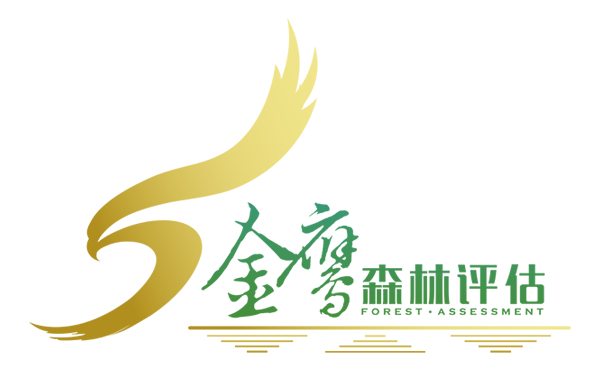发布:2025-10-06 浏览:0
森林资源资产的评估的测算是十分复杂的。木材不是一种标准的产品,它以各种各样的大小、形态和等级出售。在现实森林中,没有两个林地质量、地利等级完全相等的林分。因此,在森林资源资产评估前,必须考虑评估中的一些基本问题。正确地了解影响森林资源资产评估价值的各种因素,对于做好评估测算具有重要的指导作用。
The assessment and calculation of forest resource assets are very complex. Wood is not a standard product, it is sold in various sizes, shapes, and grades. In real forests, there are no two forest stands with completely equal forest quality and land use levels. Therefore, before evaluating forest resource assets, some basic issues in the evaluation must be considered. Accurately understanding the various factors that affect the evaluation value of forest resource assets is of great guiding significance for conducting effective evaluation and calculation.
一、评估的目的资产评估的目的决定了资产评估的价值类型,不同的资产评估价值类型其评估的思路、评估依据、作价的标准均不相同,其评估的结果可能完全不同。评估中价值类型可分为市场价值类型和非市场价值类型,非市场价值类型有投资价值类型、清算市场价值类型等森林资源资产评估和其他任何资产评估一样,它的结果取决于评估的目的。森林资源资产评估的目的可以是森林资源资产的拍卖、转让、联营或股份经营,也可以是以森林资源资产作为抵押、担保或者是企业的清算。不同的评估目的,选用的评估方法、精度要求和评估结果是不相同的。出售、转让成熟龄的林木资产,购买者收购这些林木并立即采伐的这类评估中。评估价值类型是市场价值类型。这类评估主要考虑市场的交易价格,按现行市价法和木材市场价倒算法进行评估。而且要求较高的精度,通常要求进行作业设计调查,作出伐区的工艺设计,并按设计书的结果,按市场价倒算法进行评估。对于林木资产进行抵押、担保一类评估。这类评估是属于清算价格类型。这类评估结束时并未发生直接的现金交易。抵押资产的接受者主要考虑该林木资产的价值是否能抵上他所放贷出去的资金,在快速变现时能否将其收回,要求较高的保险系数,评估的结果一般比实际价偏低。但现实评估中,银行一般要求评估出市场价值类型,然后自行打折。这时评估出的市场价格经常比正常价格稍高。根据林木资源资产,按照林龄或起源采用不同的评估方法进行评估,评估方法主要有市场价倒算法、收获现值法、重置 成本法、林地期望价法、年金资本化法。其中属成熟林及过熟林,采用市场价倒算法进行评估;属中龄林及近熟林,采用收获现值法进行评估;属幼龄林,采用重置成本法进行评估;属天然林,采用年金资本化法进行评估。对于林地采用林地期望价法。
1、 The purpose of asset evaluation determines the value type of asset evaluation. Different asset evaluation value types have different evaluation ideas, evaluation criteria, and pricing standards, and their evaluation results may be completely different. The value types in evaluation can be divided into market value types and non market value types. Non market value types include investment value types, liquidation market value types, etc. Like any other asset evaluation, the results of forest resource asset evaluation depend on the purpose of the evaluation. The purpose of forest resource asset assessment can be the auction, transfer, joint venture, or equity operation of forest resource assets, or the use of forest resource assets as collateral, guarantee, or liquidation of enterprises. Different evaluation purposes require different evaluation methods, accuracy requirements, and evaluation results. In the evaluation of selling or transferring mature forest assets, buyers purchase these trees and immediately harvest them. The evaluation value type is the market value type. This type of evaluation mainly considers market transaction prices and is evaluated using the current market price method and the wood market price inversion algorithm. And it requires high precision, usually requiring job design investigation, making process design for the cutting area, and evaluating according to the results of the design book and the market price inversion algorithm. Evaluate the mortgage and guarantee of forest assets. This type of evaluation belongs to the liquidation price category. At the end of this type of assessment, there were no direct cash transactions. The recipient of the mortgaged asset mainly considers whether the value of the forest asset can offset the funds lent out, and whether it can be recovered when quickly realized, requiring a high insurance factor. The evaluation result is generally lower than the actual price. But in reality, banks generally require an assessment of the market value type and then offer discounts on their own. At this point, the assessed market price is often slightly higher than the normal price. According to the forest resource assets, different evaluation methods are adopted based on the age or origin of the forest. The evaluation methods mainly include the market value inversion algorithm, the present value of harvest method, the reset cost method, the expected value of forest land method, and the capitalization method of annuity. Among them, mature forests and overripe forests are evaluated using the market price inversion algorithm; Belonging to medium aged forests and near mature forests, evaluated using the present value of harvest method; Belonging to young forests, the reset cost method is used for evaluation; It belongs to natural forests and is evaluated using the annuity capitalization method. Adopt the forest expected value method for forest land.
二、估值方法介绍(1)市场价倒算法市场价倒算法是用被评估林木采伐后所得的木材的市场销售总收入,扣除木材经营所消耗的成本(含有关税费)及合理利润后,将剩余部分作为林木资产的评估价值的方法;(2)收获现值法收获现值法是利用收获表预测的被评估森林资源资产在主伐、间伐时纯收益的折现值,扣除评估后到主伐期间所支出的营林生产成本折现值的差额,作为被 评估森林资源资产评估值的一种方法;(3)重置成本法重置成本法是按现时的工价及生产水平重新营造一块与被评估森林资源资产相类似的资产所需的成本费用,作为被评估森林资源资产的评估值;(4)年金资本化法年金资本化法是将被评估林地资产每年相对稳定的地租收益作为资本投资收益,按适当的投资收益率估算林地评估值的方法;(5)林地期望价法林地期望价法评估对象为林地使用权,以实现森林永续利用为前提并假定每个轮伐期林地上的收益相同,支出也相同,从无林地造林开始进行计算,将无穷多个轮伐期的净收益全部折为现值累加求和作为拟评估林地资产评估值。增值主要原因为存货均为森林资源,入账成本为历史成本,而对中林龄、近熟林、成熟林、过熟林及林地使用权采用的评估方法为收益法或市场法,是从市场变现的角度体现评估值。
2、 Introduction to Valuation Methods (1) Market Price Inverted Algorithm Market price inverted algorithm is a method of using the total market sales revenue of the timber obtained after the evaluated timber is harvested, deducting the cost of timber operation (including relevant taxes and fees) and reasonable profits, and using the remaining part as the valuation value of timber assets; (2) The present value of harvest method is a method of evaluating the value of the evaluated forest resource asset by using the discounted value of the net income of the evaluated forest resource asset during main and intermediate logging predicted by the harvest table, deducting the difference between the discounted value of the forest production cost incurred from the evaluation to the main logging period; (3) The reset cost method is the cost of creating an asset similar to the evaluated forest resource asset based on the current labor price and production level, which serves as the evaluation value of the evaluated forest resource asset; (4) The annuity capitalization method is a method of estimating the assessed value of forest land assets based on the relatively stable annual land rent income as capital investment income, using an appropriate investment return rate; (5) The expected value method of forest land is used to evaluate the right to use forest land, based on the premise of achieving sustainable forest use and assuming that the income and expenditure on forest land during each rotation period are the same. The calculation starts from afforestation without forest land, and the net income of infinite rotation periods is converted into present value and accumulated as the evaluation value of forest land assets to be evaluated. The main reason for appreciation is that the inventory is all forest resources, and the recorded cost is historical cost. The evaluation methods used for the use rights of medium aged forests, near mature forests, mature forests, over mature forests, and forest land are income method or market method, which reflects the evaluation value from the perspective of market realization.
本文由 林业资产价格评估 友情奉献.更多有关的知识请点击 http://www.jyslpg.com/ 真诚的态度.为您提供为全面的服务.更多有关的知识我们将会陆续向大家奉献.敬请期待.
This article is dedicated to the evaluation of forestry asset prices For more related knowledge, please click http://www.jyslpg.com/ Sincere attitude To provide you with comprehensive services We will gradually contribute more relevant knowledge to everyone Coming soon.




















